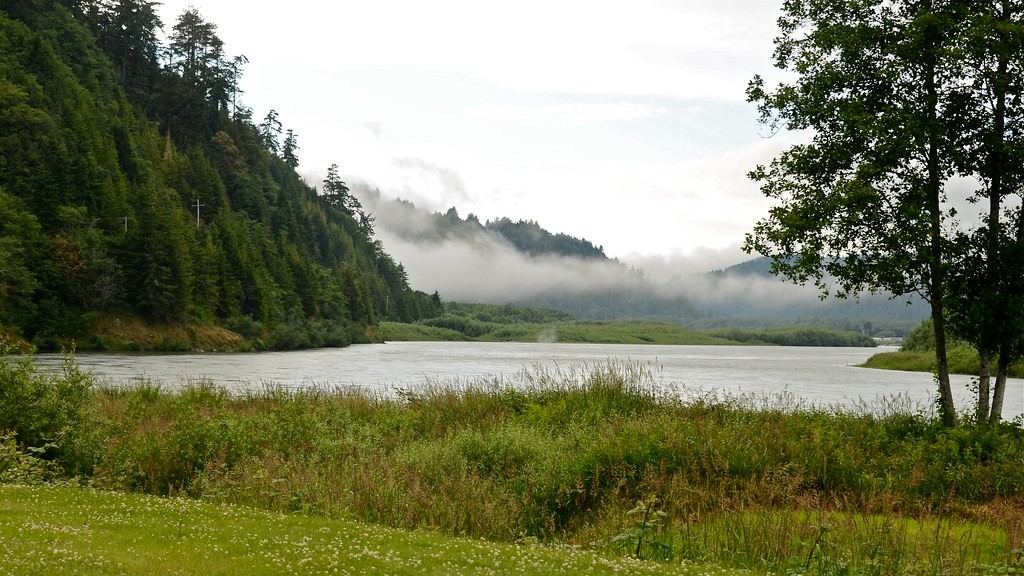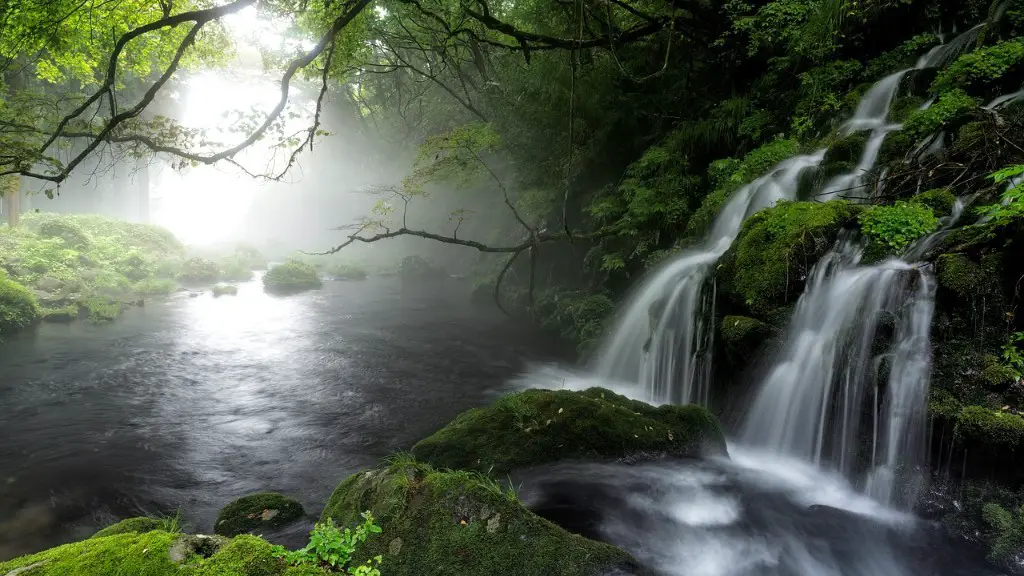The Yellow River is one of the most important rivers in China and is often referred to as the “cradle of Chinese civilization.” The river gets its name from the massive amount of sediment that it carries—so much so that it often turns a distinct yellow color. The Yellow River is responsible for irrigating the lands of northern China and is one of the reasons why the region is so fertile.
The Yellow River is one of the most important rivers in China, and it is also one of the most fertile. The river is so important to the country that it is sometimes called the “Mother River.”
There are a few reasons why the Yellow River is so fertile. First, the river flows through a very diverse landscape. It starts in the Tibetan Plateau and winds its way through forests, grasslands, and deserts. This diversity of landscapes provides a variety of nutrients that the river carries to its downstream areas.
Another reason for the Yellow River’s fertility is its high sediment load. The river’s sediment comes from the many mountains that it flows through. This sediment is very rich in minerals and other nutrients that are essential for plant growth.
Finally, the Yellow River has a large floodplain that is perfect for agriculture. The floodplain is so fertile that it is sometimes called the “breadbasket of China.”
These three factors – the river’s diversity, sediment load, and floodplain – make the Yellow River one of the most fertile rivers in the world.
Does the Yellow River have fertile soil?
The Loess Plateau is a region of Asia that is characterized by its loess soil. Loess is a type of soil that is silty and yellowish brown in color. It is a fertile soil that is conducive to agriculture. The Loess Plateau is an important agricultural region in China.
The Yellow River, sometimes called the cradle of Chinese civilization, is the second longest river in China and the third largest in terms of drainage basin area. The river gets its name from the large amounts of yellow silt that it carries from the Loess Plateau in its upper reaches. With a length of 3,395 miles (5,464 km), the Yellow River is an important waterway in China, providing irrigation and drinking water for many people along its course.
Is the Yellow River good for farming
The Yellow River basin has a long history of agriculture, dating back to the early days of human settlement in the area. Today, the majority of the basin’s arable land is devoted to wheat farming. This intense human occupation of the land has had a negative impact on wildlife, as many species are now limited by both natural conditions and human activity.
The Yellow River is one of the most important rivers in China. It is the third largest river in China and has a drainage basin of around 750,000 square kilometers (290,000 square miles). The river is called the Yellow River because its waters carry silt, which give the river its yellow-brown color. When the river overflows, it leaves a yellow residue behind.
What makes a river fertile?
A river valley is fertile because when the river floods, it deposits sediment and organic material on the normally dry land. This provides fresh nutrients for plants to grow. A river will flood when it absorbs too much precipitation in the form of rain or snow.
The valley of the Indus is the most fertile and productive region of Pakistan. It is home to the majority of the country’s population and produces the lion’s share of its agricultural output. The valley is also the primary source of Pakistan’s water supply, as it is fed by the Indus River.
Why does the Yellow River have so many bodies?
It is estimated that most of the dead found in the Yellow River are suicide victims. Suicide is the cause of death for 85 percent of bodies found, with around 10 percent victims of accidental deaths and 5 percent representing dumped murder victims. There are no statistics showing exactly how many corpses flow in the river at any one time.
The Yellow River is the fifth longest river in the world and the mother monster of all rivers in China. It has been aptly given the name “China’s Sorrow” because of the massive floods it has caused over the years, which have claimed millions of lives. The river is also the largest “yellow” river in the world, due in large part to the large amount of sediment it carries. The river is home to the world’s largest waterfall, the Hukou Waterfall, and ships have been known to sail on a raised river – 10m above the ground!
Will the Yellow River dry up
The Yellow River is an important river in China, and its lower course is drying up every year. This is having a significant impact on industrial and agricultural production, as well as the livelihood of the people living alongside the river. The government is working on a number of initiatives to try to mitigate the problem, but it is a complex issue with no easy solutions.
The ‘agricultural crop’ subsystem was widely spread across regions in the ST Period. Yam, buckwheat, alfalfa and sesame were mainly planted in the southern regions and the Yellow River region. This subsystem allowed for the development of sedentary societies and the growth of cities.
Is Yellow River water drinkable?
The water in the section of the Yellow River was found to be too toxic to drink or use for irrigation and it killed goats that drank from it. The discharge from the sewage pipe is thought to be the cause of the river’s contamination.
Ningxia farmers have relied on the Yellow River since 221 BCE, when Qin Dynasty engineers clawed narrow trenches from the sand, introducing some of the first instances of irrigated agriculture on earth. The Yellow River is an essential source of water for the farmers of Ningxia, and has been vital to the development of agriculture in the region. Without the Yellow River, the farmers of Ningxia would not be able to grow the crops that they rely on for their livelihoods.
Is the Yellow River yellow because of pollution
The Yellow River is the longest river in China and the sixth-longest in the world. It is also the second-largest river in Asia by discharge volume after the Ganges. The Yellow River basin has an east–west extent of about 1,900 kilometers (1,180 mi) and a north–south extent of about 1,100 km (680 mi). Its total drainage area is about 752,546 square kilometers (290,560 sq mi)[1] and its basin was the birthplace of Chinese civilization, which grew along both its banks. Historically, it has been called the “cradle of Chinese civilization”.
The Three Gorges Dam on the Yangtze River is a hydroelectric gravity dam that spans the Yangtze River by the town of Sandouping, in Yiling District, Yichang, Hubei province, China. The Three Gorges Dam is the world’s largest power station in terms of installed capacity (22,500 MW) but is only the second-largest in terms of annual electricity generation (390 TWh in 2020), after the Itaipu Dam on the Brazil-Paraguay border.
Is the Yellow River still polluted?
According to new research, severe pollution has made one-third of China’s Yellow River unusable. The Yellow River, known as the country’s “mother river”, supplies water to millions of people in the north of China. However, in recent years the quality of the water has deteriorated due to factory discharges and sewage from fast-expanding cities. This is a serious problem for the people of China, and the government must take action to clean up the river and protect its people’s health.
The Indo-Gangetic Plain is one of the most densely populated regions in the world. It is home to over 600 million people, making it the most populous landmass on Earth. The plain is also one of the most productive agricultural regions in the world, with some of the highest yields of rice, wheat, and other crops. Theplain is also home to a number of important rivers, including the Ganges, Indus, and Brahmaputra.
Warp Up
The yellow river is fertile because it flows through a region of rich, loamy soil. The sediment that the river carries fertilizes the land along its banks, making it ideal for agriculture. The river also provides water for irrigation, which further enhances crop growth.
The Yellow River is one of the most important rivers in China and is also one of the most fertile. The river gets its name from the huge amount of sediment that it picks up from the loess plateau. The river is also one of the longest in the world.





